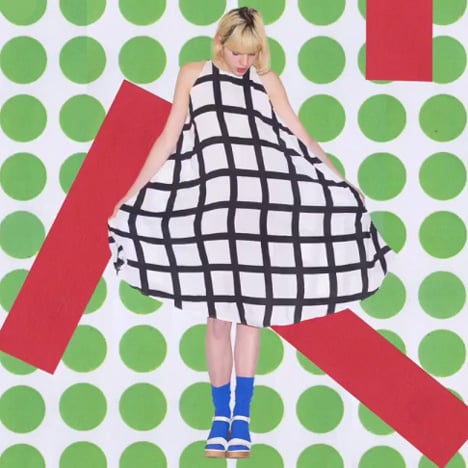
The return of Memphis: "it's something that's in the air"
Feature: thirty-three years after designs by the Memphis Group caused a "mass-media event" at the Salone del Mobile, the bold graphic style they created is back in favour in Milan and is appearing in some unusual places, finds Dan Howarth.
Clashing colours, blocky shapes and loud patterns could be spotted in galleries, shops and on stands around Milan this week, signalling a return of the Memphis style often associated with these elements.
The Memphis movement began in 1980 after Postmodernist designer Ettore Sottsass gathered together a group of like-minded designers working in Milan. The group allegedly took its name from the 1966 Bob Dylan track "Stuck Inside of Mobile with the Memphis Blues Again" that was played throughout their meeting.
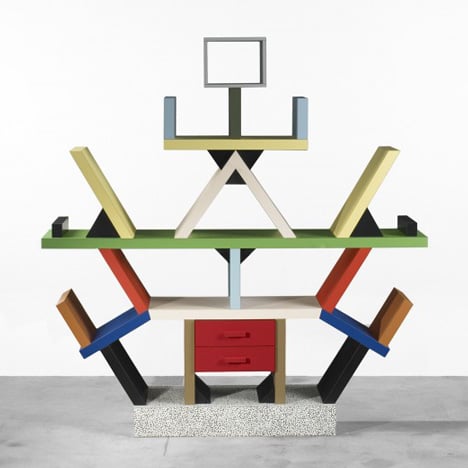
The designers, including Sottsass, Alessandro Mendini, Michael Graves, George Sowden and Nathalie Du Pasquier, debuted a range of pieces designed to communicate ideas rather than being based on forms at the 1981 Salone del Mobile in Milan.
"It was probably the beginning of a new era," Du Pasquier told Dezeen. "Form did not have to follow function any more, and design was about communication. Even though very few of the things were actually in production, it was a big mass-media event."
These products included Sottsass' unconventional Carlton bookcase, which featured colourful angled shelves and bookends, disconnected from one another. It aimed to question why a bookcase needed to look like a typical bookcase.
This notion fell under the Postmodern cultural style - a reaction to the functional aesthetic of the Modernism movement prevalent in the years before - and resulted in a series of pieces created from geometric shapes in bright colours.
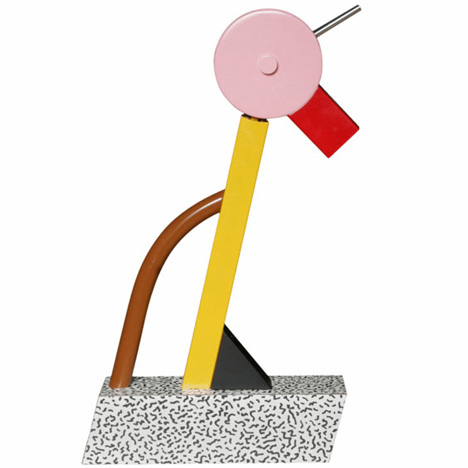
Over three decades later, the forms, patterns and colours typical of Memphis have returned to Milan's design week and can be seen in exhibitions across the city.
The rise of the trend has come after a number of exhibitions and articles about Postmodernism and design in the 1980s, following Sottsass' death in 2007.
These included Postmodernism: Style and Subversion at London's V&A museum in 2011-12 and Li Edelkoort's Totemism show, which drew comparisons between Memphis and contemporary design in South Africa at Design Indaba last year.
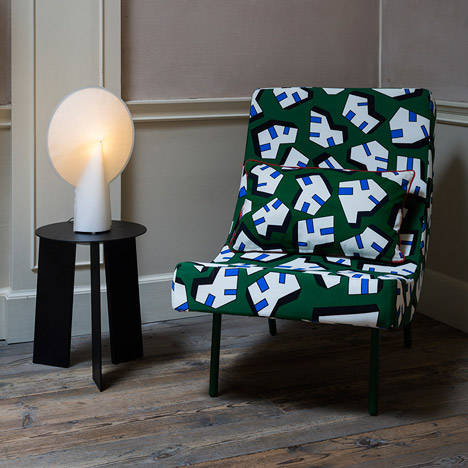
After leaving the design world to work as an artist, Natalie du Pasquier has recently been thrown into the spotlight by lending her bold signature prints to products by well-known brands.
Her colourful patterns have been applied to cushions and accessories launched last year as part of the Wrong for Hay partnership between British designer Sebastian Wrong and Danish company Hay.
The Du Pasquier-patterned products are currently on display at the brand's pop-up Mini Mart for Milan design week and press material is being given away in the tote bags, which have been spotted slung over many shoulders around the city.
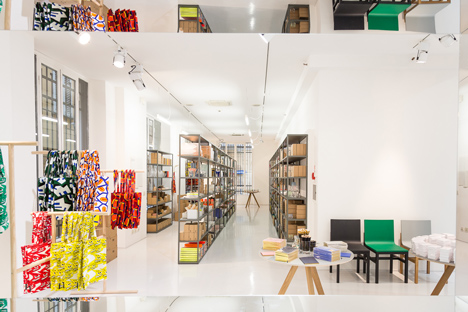
According to a spokesperson for Hay, the range has been so successful that the brand has commissioned Du Pasquier to extend the collection with new designs.
Her graphics are also used on garments by fashion brand American Apparel and for a rug produced by La Chance, which debuted in Milan last year.
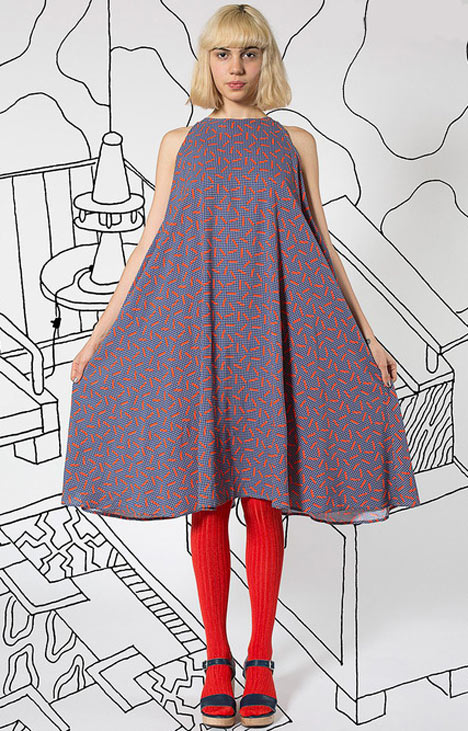
"Memphis as a movement and philosophy has been in the public eye for a few years now," said Johanna Agerman Ross, editor-in-chief of Disegno magazine, who approached Du Pasquier about a collaboration after seeing her prints resurface and curated an exhibition of her new work for Milan design week this year.
"Nathalie has had some prominence, for example with her textiles for Wrong for Hay," said Agerman Ross. "There had also been some other balls in the air such as American Apparel, so it seemed like the perfect time to approach her."
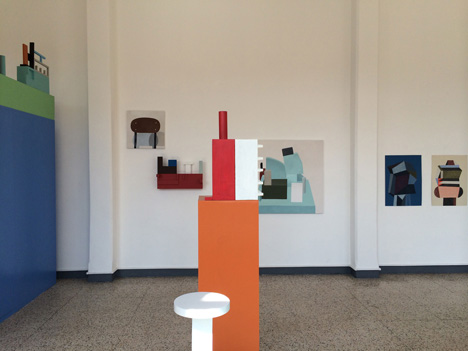
An exhibition of original Memphis furniture is currently on show at Milan's Fondazione Stelline, providing visitors with a handy comparative tool to spot elements from the designs in new work and inspiration for more young designers visiting the city.
"Memphis has been the last big movement so people remember very well," said Alberto Bianchi Albrici, the exhibition's curator and head of Post Design - the company that continues to produce the pieces.
"Sure it's more popular today more than ten years ago," he said. "Firstly because we have internet. Also because we are sought after by several people from stores who see the exhibition at the museum. I think that is normal."
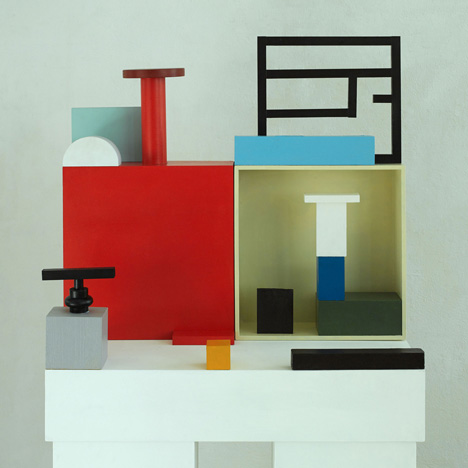
With so many references around, designers are adapting the style and introducing new colours, geometries or patterns to create contemporary iterations.
"I think a lot of younger designers that belong to a generation that didn't live through it come to it as a point of inspiration," said Agerman Ross.
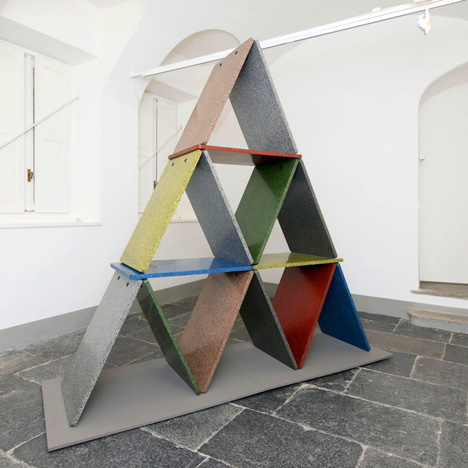
Members of the Terrazzo Project have made the Terrazzo composite material in bright colours and used it to build geometric sculptures on show alongside the ECAL exhibition in Milan's Brera district.
The colours and styling used for the installation are very similar to work by Sottsass. "What we wanted to do this year was colourful and it's true, [the installation] is similar to Memphis in many ways." said Philippe-Albert Lefebvre of the Terrazzo Project. "It's something that's in the air," his colleague Ana Varela added.
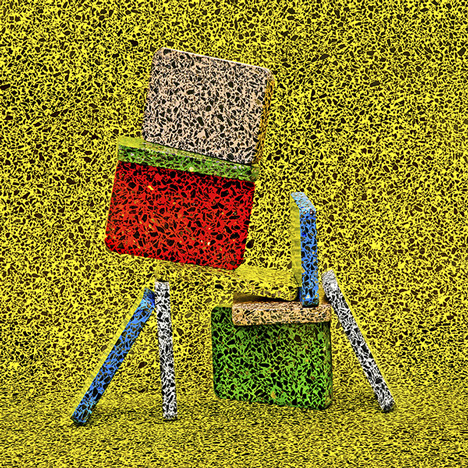
However, Memphis was not originally just about decoration, colour and graphics.
"Memphis is being used as a style and as a styling tool by a lot of designers and companies, whereas it was actually more of a philosophy and way of working," explained Agerman Ross.
Albrici agrees that the term "Memphis" shouldn't just be thrown around to describe the patterns and clashing colours added to designs.
"If you come to me and say 'I am influenced heavily by Memphis', my feeling is that you need to do something new," said Albrici. "You can be influenced by Memphis but you must be careful, because to make strange drawings is easy but it's not only strange, there was a more complicated structure."
"Memphis wasn't about decoration," said Du Pasquier's partner and fellow Memphis Group member George Sowden. "There wasn't even a Memphis style, despite what everyone says."
He believes that the Postmodern philosophy may still be present today, but that is has changed. "Maybe younger Postmodern designers are using it themselves also as communication, but I don't think they're doing it in the same way we were doing it during Memphis time."
Nevertheless, Du Pasquier said she is happy to continue her recent foray back into design. "I have started from where I stopped and I now have put the machine in motion again," she said. "I'm going to design other things, textiles. If I have requests I am more than happy to do it."
But she wonders how long the demand for her signature style will last.
"Maybe people will only be interested in stripes next year and won't call me any more."